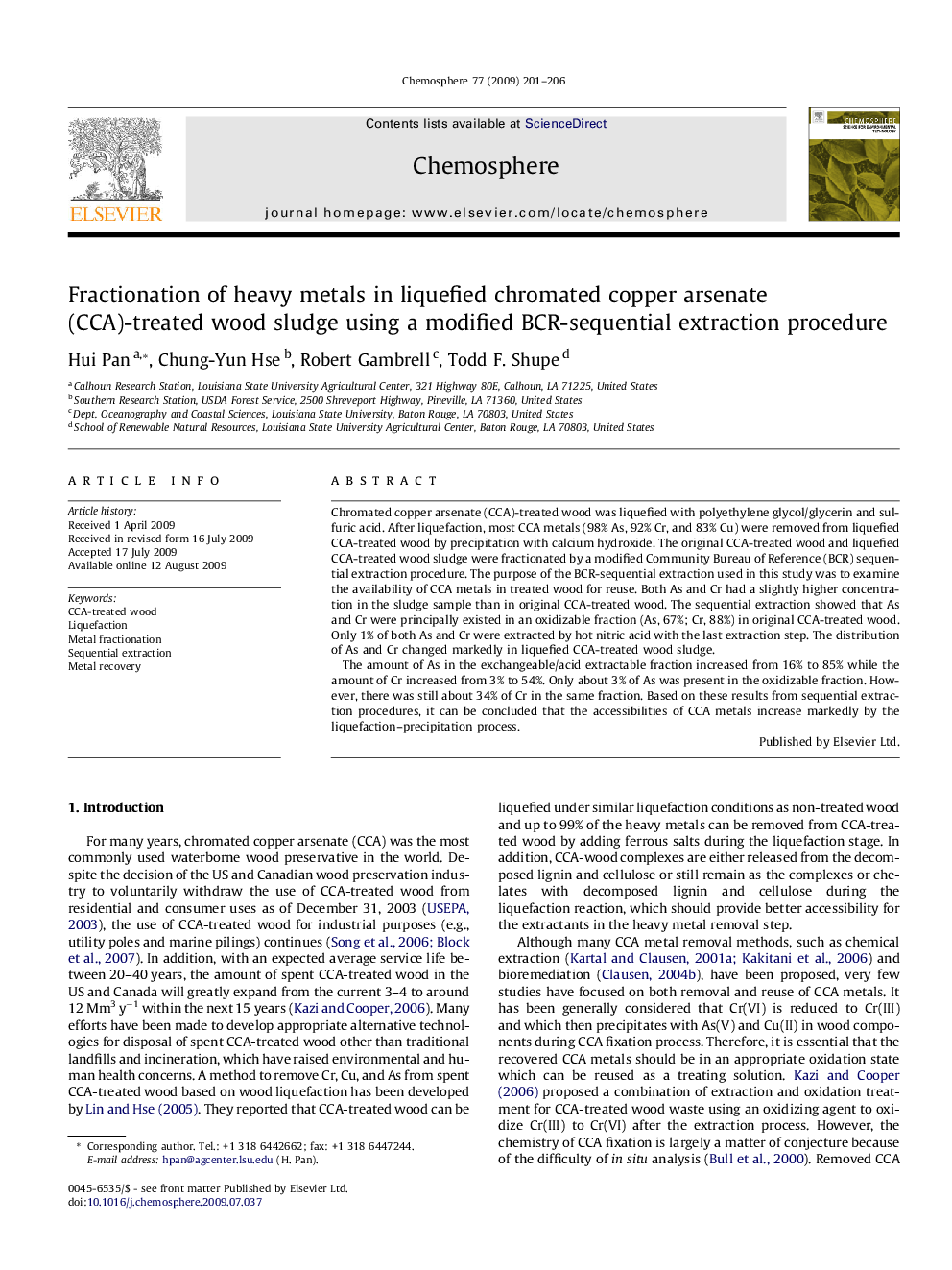| Article ID | Journal | Published Year | Pages | File Type |
|---|---|---|---|---|
| 4412550 | Chemosphere | 2009 | 6 Pages |
Chromated copper arsenate (CCA)-treated wood was liquefied with polyethylene glycol/glycerin and sulfuric acid. After liquefaction, most CCA metals (98% As, 92% Cr, and 83% Cu) were removed from liquefied CCA-treated wood by precipitation with calcium hydroxide. The original CCA-treated wood and liquefied CCA-treated wood sludge were fractionated by a modified Community Bureau of Reference (BCR) sequential extraction procedure. The purpose of the BCR-sequential extraction used in this study was to examine the availability of CCA metals in treated wood for reuse. Both As and Cr had a slightly higher concentration in the sludge sample than in original CCA-treated wood. The sequential extraction showed that As and Cr were principally existed in an oxidizable fraction (As, 67%; Cr, 88%) in original CCA-treated wood. Only 1% of both As and Cr were extracted by hot nitric acid with the last extraction step. The distribution of As and Cr changed markedly in liquefied CCA-treated wood sludge.The amount of As in the exchangeable/acid extractable fraction increased from 16% to 85% while the amount of Cr increased from 3% to 54%. Only about 3% of As was present in the oxidizable fraction. However, there was still about 34% of Cr in the same fraction. Based on these results from sequential extraction procedures, it can be concluded that the accessibilities of CCA metals increase markedly by the liquefaction–precipitation process.
